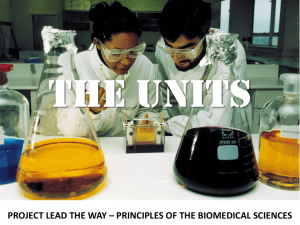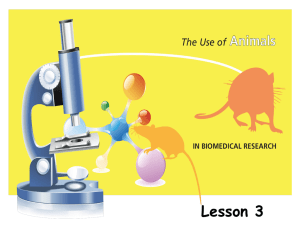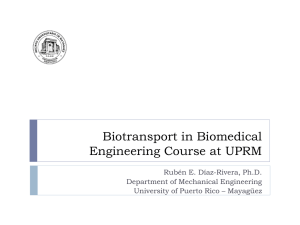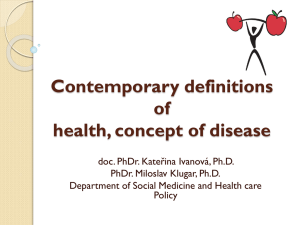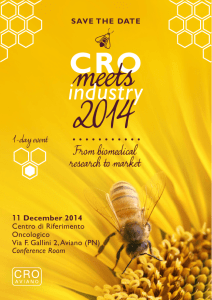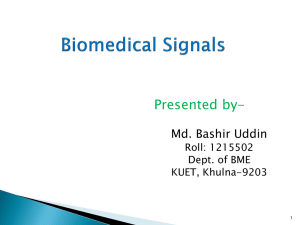Research Methods, Overview
advertisement
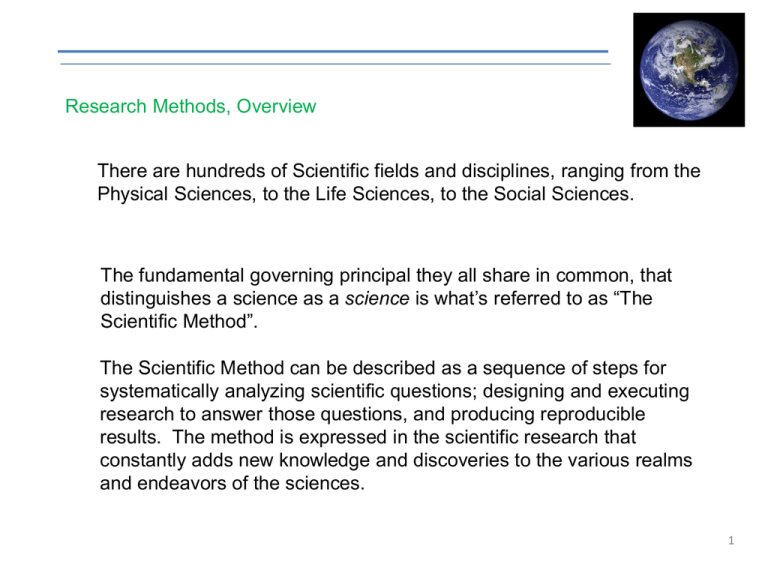
Research Methods, Overview There are hundreds of Scientific fields and disciplines, ranging from the Physical Sciences, to the Life Sciences, to the Social Sciences. The fundamental governing principal they all share in common, that distinguishes a science as a science is what’s referred to as “The Scientific Method”. The Scientific Method can be described as a sequence of steps for systematically analyzing scientific questions; designing and executing research to answer those questions, and producing reproducible results. The method is expressed in the scientific research that constantly adds new knowledge and discoveries to the various realms and endeavors of the sciences. 1 Research Methods, Overview The Scientific Method can be described as a sequence of steps for systematically analyzing scientific questions. Examples of steps in this process are; • Researching previous studies and current data to pose a question or hypothesis for current research. • Designing a research “protocol” to answer the question, or prove/disprove the hypothesis. • Executing the research to create reproducible results. The scientific method is constantly applied to research, building on previous studies to add new knowledge and discoveries to the incredible size and diversity of scientific fields. 2 Research Methods>Biomedical Application For example, lets glimpse into the research methods used to create a medical treatment. 3 Research Methods>Biomedical Application Modern Biomedical Science utilizes a long evolved array of sophisticated methods, technologies, previous research, and regulatory oversight to create new treatments. 4 Research Methods>Biomedical Application The Research Methods utilized to create a treatment include Analytical Methods, Experimental Protocols, and Information/Data research and processing. The sophisticated array of analytical methods currently used by Biomedical Researchers usually derive from the biology and chemistry of living organisms, enhanced by technology from other sciences such as computer science, robotics, optics and engineering. Some examples; Polymerized Chain Reaction, (PCR) uses enzymes originally isolated from hot springs bacteria to make quick, cheap copies of DNA. The copied DNA can than be analyzed for mutations, or to identify the organism from which the DNA was sampled. High Pressure Liquid Chromatography, (HPLC) uses computer controlled pumps to drive samples of biological substances through small columns packed with permeable resin that separate out individual components of the samples based on characteristics such as different electrical charges, molecular sizes, or other individual characteristics of the components. 5 Research Methods>Biomedical Application Experimental Protocols can broadly be separated into Basic and Applied Research. Basic research is usually defines as research designed to answer broad questions or as “discovery” research performed without the goal of direct applicable or commercial value. Applied Research is usually performed to create applicable products (such as medical treatments) from the theories, hypothesis, and discoveries derived from basic research. 6 Research Methods>Biomedical Application A research “program” can be organized around a particular disease. This program can be made up of basic research (hopefully) leading to a number of applied research studies. These studies utilize documented research procedures referred to as “protocols”. If the research program advances far enough beyond the basic and initial stages of applied research that it successfully produces a therapeutic agent showing promise for treating a disease, the researchers must next apply to a regulatory agency for the approval of a research protocol to test the therapeutic on human subjects. This phase of research is called Clinical Trials and the research protocols, Clinical Trials research protocols. 7 Research Methods>Biomedical Application Basic and applied research in a program intended to produce a therapeutic for clinical trials testing is called Pre-Clinical research. The program researchers will create a “portfolio” of all the various analytical results, previous research, scientific theory and the protocols they will use to test the therapeutic on humans. This portfolio is presented to a regulatory agency (i.e. the FDA or the EMEA). The agency will carefully evaluate all the data and plans, perhaps ask for more data or testing and/or approve or deny the request for a clinical trial. 8 Research Methods>Biomedical Application If approved, the research enters the Clinical Trials phase. This set of protocols is greatly expanded in complexity, technology and expertise, especially since human patients are now the “laboratory”. Clinical trials are performed in three phases, each expanded in size and complexity. Only a very small number of therapeutics actually make it through the complex, expensive process from basic research through clinical trials to become an approved therapeutic. The Source of the Images in this presentation was Creative Commons. 9 Research Methods>Biomedical Application>Information And last but not least; The third aspect of this process mentioned back in slide 5 is Information/Data research and processing. Modern Biomedical research, (indeed virtually all modern research) requires utilization of a sophisticated variety of information and data processing. 10 Research Methods>Biomedical Application>Information Basic and Applied research requires review and evaluation of information such as journal articles and sources documenting concurrent and previous research, cumulative information from databases, epidemiological data, procedures from technical manuals for experimental methods, and information from other sources. Other areas of information required for research can include; • Statutory regulations, information from regulatory agencies, •copyright information, •patient records and other patient data, •“global decision making” data such as strategic intelligence, economic data, environmental data. Different types of information are needed throughout this process. Afterwards, information about an approved pharmaceutical such “pharmacovigilance” and epidemiological data will be gathered and evaluated for as long as the pharmaceutical is utilized in humans. 11 Research Methods>Biomedical Application>Information Concurrently with information “inputs” to the research/development process are information “outputs” i.e. the data, information, evaluation, publications, and regulatory filings that are the product of research. The data produced from modern biomedical research, especially clinical/post clinical studies, is huge, complex, and requires sophisticated “indexing”, storage and retrieval methodologies to make it available for evaluation, regulatory requirements and oversight, this is, of course, a highly regulated requirement for patient testing. This data is, by necessity, virtually all digital due to requirements for quick access, searcheability, cost-effectiveness, and interoperability with other data. The volume and sophistication of biomedical data as well as data interoperability, archiving, retrieval, migration, and the creation of metadata and information architecture tools that makes this all possible will only continue to increase over time. 12 Research Methods>Biomedical Application>Information The Source of the Images in this presentation was Creative Commons. Jim. Schroeder. Version 2 040710. 13
